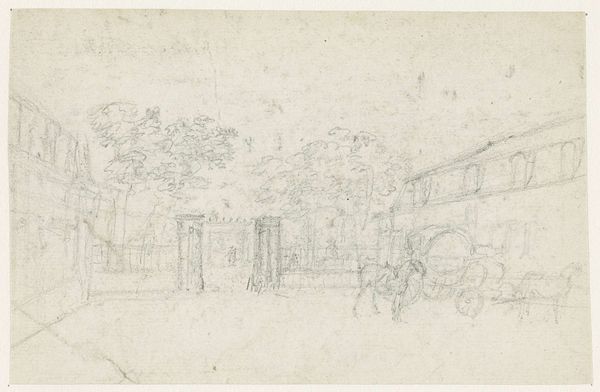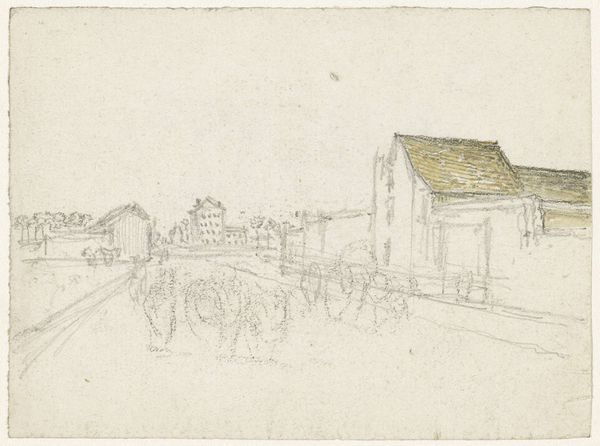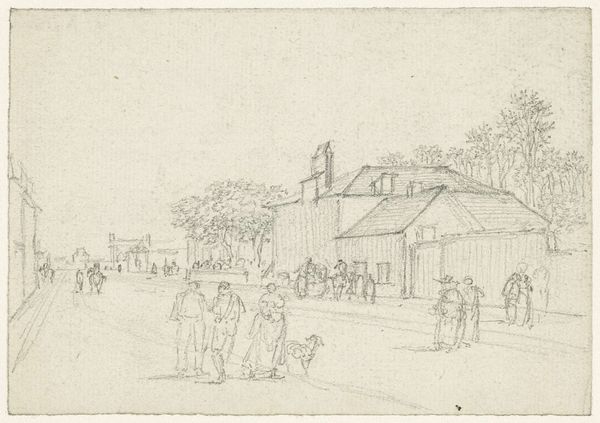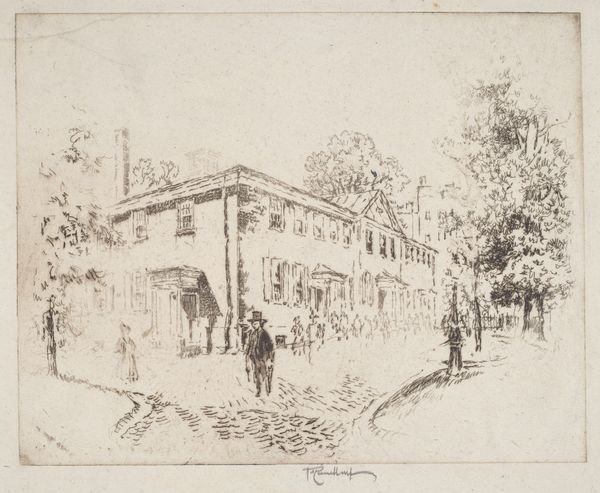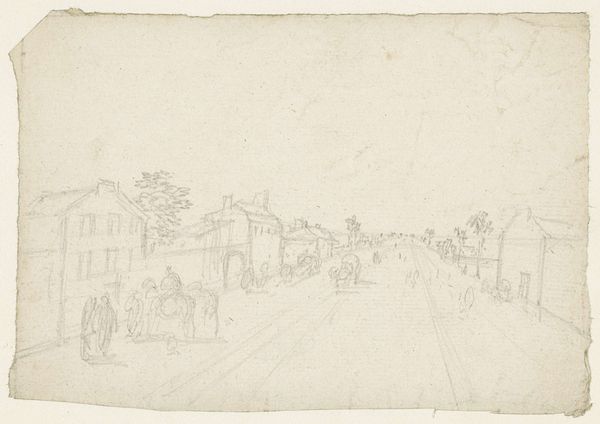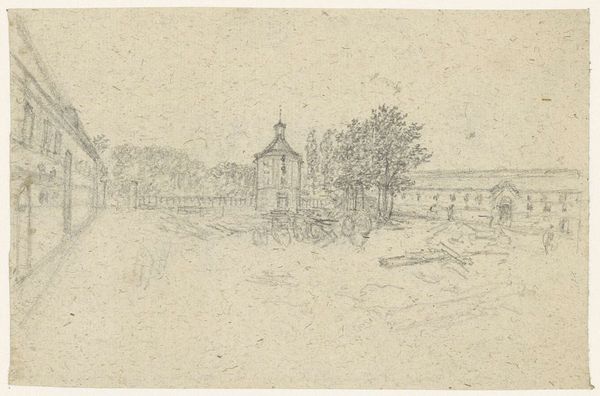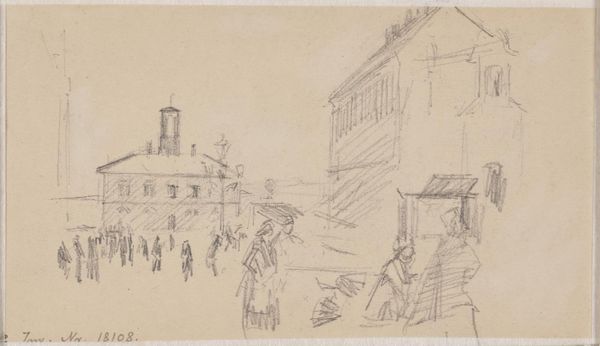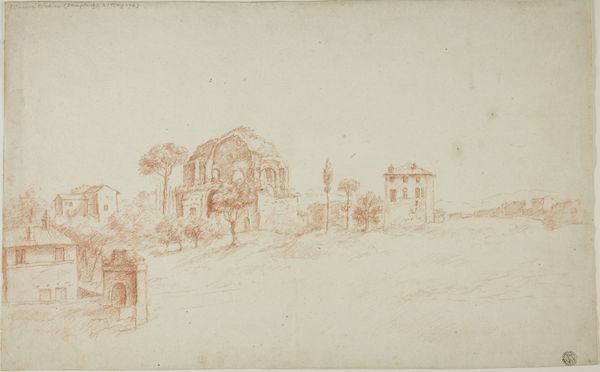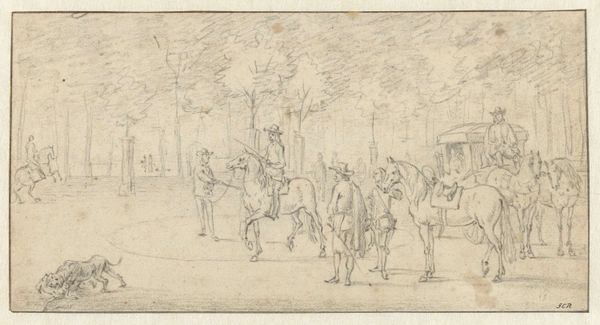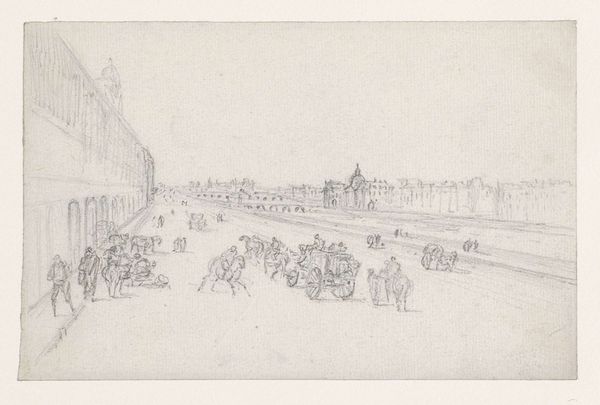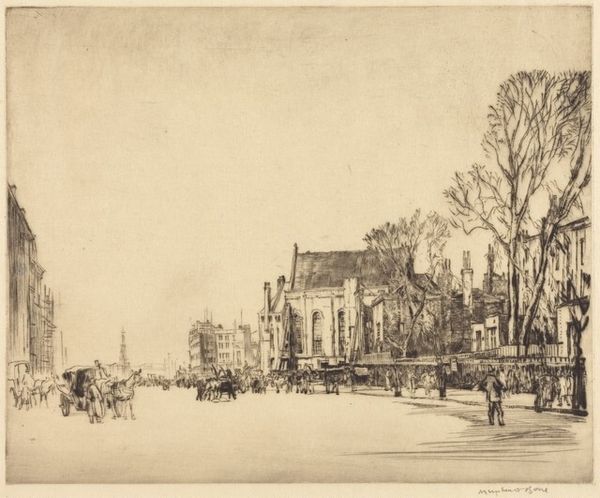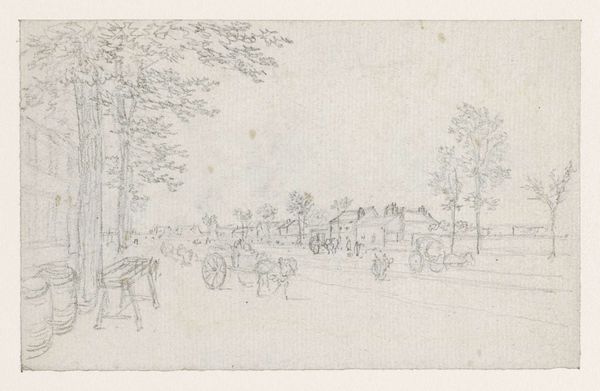
drawing, pencil
#
drawing
#
light pencil work
#
quirky sketch
#
pen sketch
#
old engraving style
#
landscape
#
personal sketchbook
#
sketchwork
#
romanticism
#
pen-ink sketch
#
pencil
#
pen work
#
sketchbook drawing
#
genre-painting
#
sketchbook art
#
realism
Dimensions: height 100 mm, width 157 mm
Copyright: Rijks Museum: Open Domain
Curator: This delicate drawing, “Een cour tussen twee corps de logis,” by Georges Michel, captures a courtyard scene with a hushed, almost ethereal quality. The medium is pencil. What's your immediate impression? Editor: The first thing that strikes me is its fleeting, dreamlike nature. It's as if the artist captured a memory just before it faded away. The light pencil work gives everything a fragile, temporal feel. I’m thinking of communal space as memory palace... Curator: Indeed. Michel, working in the late 18th and early 19th centuries, was deeply engaged with capturing specific locales and this drawing allows us a glimpse into the kind of spaces of commerce that helped support larger economic networks. Note the buildings flanking the scene, presumably lodgings, flanking the open trading spaces. How might this arrangement inform us about class relationships? Editor: That architectural arrangement certainly reflects societal hierarchies. And consider the trees, evenly spaced, offering shade but also signifying order, control. Visually they feel as though society has shaped nature. Does this controlled symmetry enhance feelings of safety for its users? Curator: A pertinent point, this controlled composition may reveal wider aspirations and societal attitudes towards commerce, in which the balance between productivity and stability can also shape expectations and values of an elite social stratum. Editor: Absolutely. What also catches my eye is the faint yet discernable presence of figures and carriages. Their symbolism and interaction, even in such a light rendering, hint at the purpose of the courtyard as a center of daily exchanges, trade and status updates in pre-industrialized hubs. They also inject life and rhythm to the space itself. Curator: Precisely, the drawing illustrates how space shapes behavior. These faint lines indicate how integral the design and function of this courtyard are. By bringing structure to commerce it ultimately creates a network. It seems the buildings define commerce and community life in those days, serving as visible manifestation of established hierarchies. Editor: Considering it further, it seems as if through these images the artist offers glimpses into lost societies where cultural values of social engagement were intimately bound to specific architectural settings—aren’t we all looking for similar social anchors? Curator: You've articulated that connection beautifully. It's intriguing to realize that an artwork from over two centuries ago continues to offer us valuable points about both historical society, the changing meaning of progress and social memory. Editor: Agreed.
Comments
No comments
Be the first to comment and join the conversation on the ultimate creative platform.
